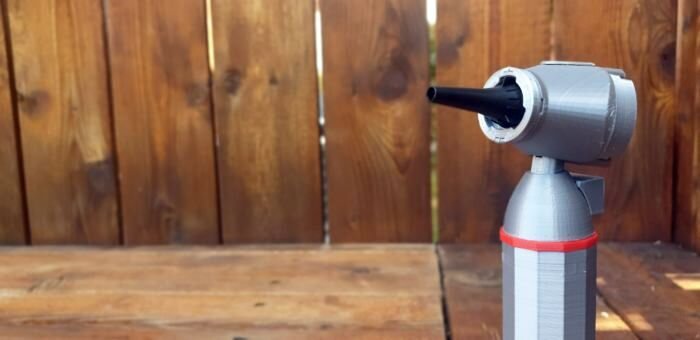![The open source 3D printed otoscope [Source: The Glia Project]](https://fabbaloo.com/wp-content/uploads/2020/05/image-asset_img_5eb050b4885d9.jpg)
The Glia Project is a fascinating global initiative to provide low-cost medical gear through the use of 3D modeling and printing.
The problem they are solving is that many areas around the world are poor and unable to afford the increasingly expensive cost of basic medical equipment. In an effort to make more profits and compete in the market, many medical devices have gradually grown more sophisticated and thus more expensive.
While that might be ok for parties with extensive insurance plans or weighty hospital budgets, it is totally unhelpful for those in war zones, remote areas or poor third-world countries. In some cases these areas simply go without the medical equipment that could provide simple, but very welcome benefits.
The Glia Project
The Canada-based Glia Project attempts to overcome this by providing certified designs as 3D models that can be 3D printed and assembled by practitioners. If there is Internet and a 3D printer, these devices can be produced locally.
The Glia Project explains:
“We want to change the way people interact with their devices. Providing communities with open-access low-cost medical devices fosters a culture of self-reliance and sustainability. If low-resource communities can access the equipment they need via an open-access model, they are empowered to troubleshoot problems, customize designs to meet their needs and share their findings with others.
The ability to share successes in an open-access environment allows medical and technical communities to work together and avoid duplication of work and long feedback cycles. This model allows off-patent devices to exist as high-quality low-cost generic models, which also exerts downward pressure on prices for high-quality premium brands.”
Glia Medical Tools
So far their inventory of generic medical equipment consists of:
-
Stethoscope
-
Tourniquet
-
Otoscope (visually examines outer ear)
Here’s a video of how to assemble the Otoscope:
And they are working on developing:
-
Pulse Oximeter (measures oxygen saturation)
-
Electrocardiogram
-
Dialysis
And I’m certain they will add more devices to their catalog as time passes.
Glia Certifications
What’s fascinating is that Glia’s staff is mostly medical specialists of one kind or another. Their roles currently include:
-
Medical Director
-
Physician
-
Registered Nurse
-
Audiologist
-
Medical Student
The idea is that professionals will certify the design of a device before it is deployed to the world via the Internet. This means those who make use of the locally-produced devices have some level of assurance they are properly functional.
None of this would be possible without the availability of low-cost 3D printing options, and I’m very glad that is the case.
The folks at Glia have combined technologies together to provide a great value to affected areas. Imagine that a child may not go deaf because their physician was able to make a diagnosis with a locally-produced otoscope, for example.
Glia explains the problem solved by their otoscope:
“Children with even mild hearing loss perform worse than normal hearing children at school. There is also a correlation between hearing loss and dementia. Hearing evaluations are important in identifying and treating these conditions. An important step in these evaluations is an examination of the outer ear with an otoscope. This gives essential information on the ear canal, ear drum and any surrounding structures. The otoscope provides information on infections or even ear drum perforations. It also provides information on the type of hearing loss, and helps lead to more accurate diagnoses.”
No doubt this challenge exists worldwide, but Glia is there to help.
For those in affected areas, please try to make use of Glia’s offerings.
For those not requiring these services, consider making a donation to Glia, or adding yourself to their Patreon subscribers. It’s money well-spent.

